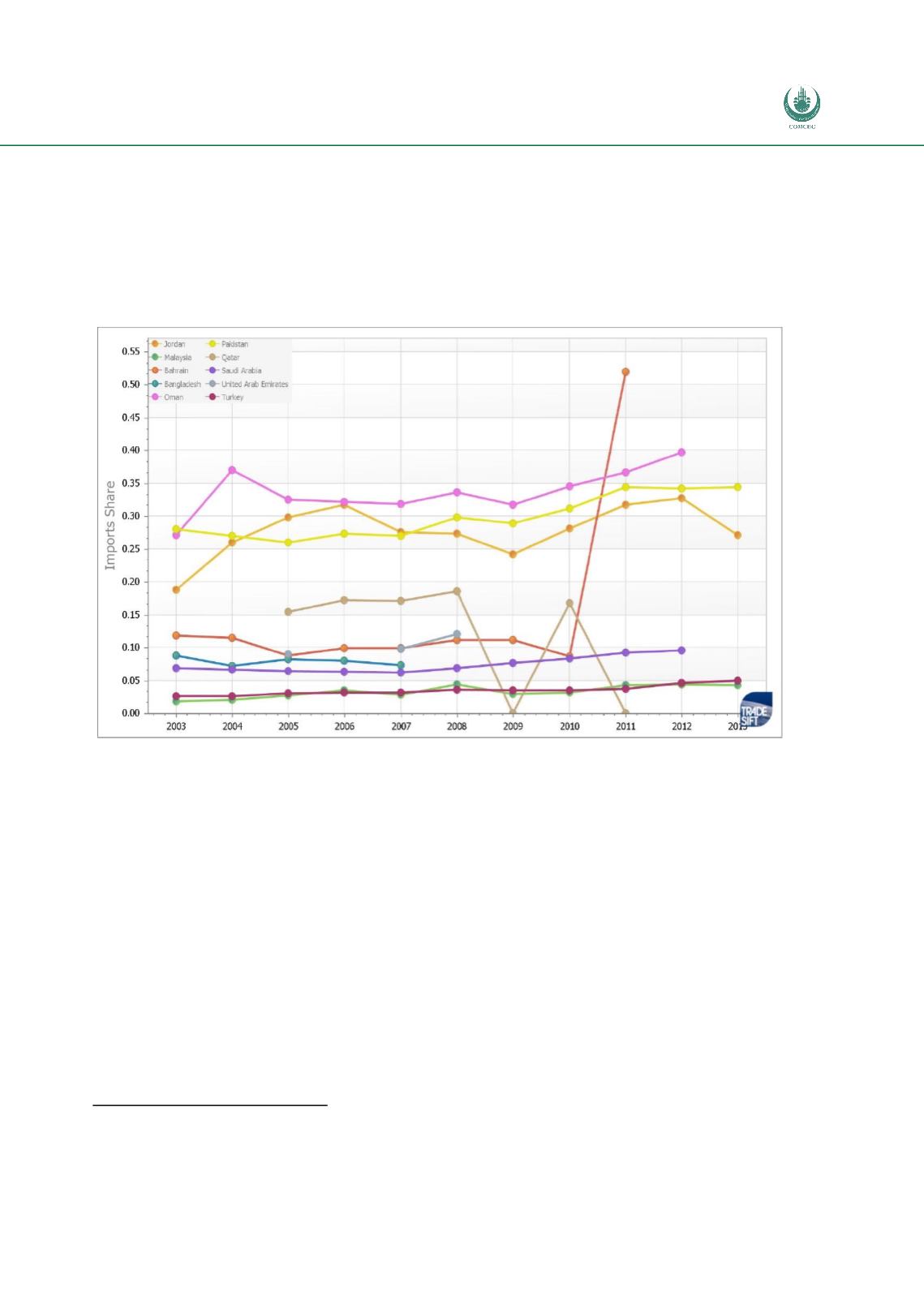

Preferential Trade Agreements and Trade Liberalization Efforts in the OIC Member States
With Special Emphasis on the TPS-OIC
161
imports from India
41
. This suggests that the imports of Pakistan from the UAE, and as a consequence,
from the TPS-OIC are not genuine imports from the Member States but the result of Indian trade
being deflected. If normal trade relationships were to exist between India and Pakistan, it is quite
possible that the share of the TPS-OIC in Pakistan imports would be substantially reduced.
Figure 73: TPS Countries: % Share of Intra-bloc Imports
Source: UN Comtrade via WITS
The analysis of the share of the TPS-OIC in each Member’s exports and imports can be revealing with
regard to the potential trade effects. As a general rule, the higher the share of trade with the
prospective trade partner, the higher the expected trade effect. This suggests that, at least on the
import side, the effects of the TPS-OIC might be more important. However, in part this will depend on
the extent to which the share of trade is explained by cross-border trade. In addition an important
share of the trade of the GCC members is oil. It is also unlikely that the intra-TPS trade will be
substantially affected by reductions in tariffs on products where tariffs tend to be particularly low.
All this suggests that the possibilities of growth of intra-TPS trade may be limited due to structural
aspects of the existing trade, as well as because of existing trading agreements which may have
already exploited these possibilities. Moreover, the fact that the agreement is not particular
ambitious in terms of scope and reduction implies that, if there is an effect, it is likely to be limited to
a very small share of the intra-TPS trade.
41
ICRIER (2014) “Normalizing India-Pakistan Trade"

















